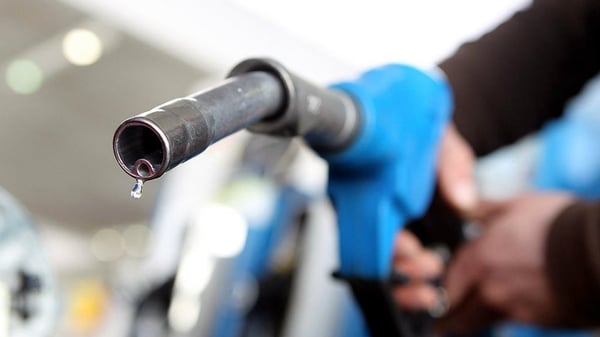 In the months since California Governor Gavin Newsom announced by executive order that the state would phase out the sale of gasoline-powered cars by 2035, the world has changed.
In the months since California Governor Gavin Newsom announced by executive order that the state would phase out the sale of gasoline-powered cars by 2035, the world has changed.
The Biden Administration is ready to pull all the levers of federal power to support domestic electric vehicle production, including R&D, tax, trade, and investment policies. General Motors, the largest automaker in the United States, committed to selling only electric vehicles by 2035 – announced by a splashy set of Super Bowl commercials.
On the state level, Massachusetts announced its intention to follow California by committing to adopting the 2035 phaseout date as part of its interim Clean Energy & Climate Plan. Washington State has introduced a legislative gasoline ban by 2030, recognizing the job-creating and economy-stimulating benefits of electric cars. Even little Rhode Island – a state with just over 3,000 EVs – recommended establishing a date to say goodbye to gas-powered vehicles.
Although it’s hard to imagine for many Americans, internal combustion engine (ICE) vehicles may not be around for much longer. That’s why we hosted “Phasing out gasoline powered cars, here and around the world,” a panel discussion with experts who all want to speed the transition to zero-emission vehicles.
Did you miss it? You can watch the full hour-and-a-half long event below.

 Our panel of electric vehicle experts, from the top-left going clockwise: Anna Vanderspek, Electric Vehicle Program Director at Green Energy Consumers Alliance; Janelle London, Co-Executive Director of Coltura; Dan Gatti, Director of Clean Transportation Policy at Massachusetts Executive Office of Environmental Affairs; and Dr. Monica Araya, Clean Mobility Advocate and Decarbonization Strategist.
Our panel of electric vehicle experts, from the top-left going clockwise: Anna Vanderspek, Electric Vehicle Program Director at Green Energy Consumers Alliance; Janelle London, Co-Executive Director of Coltura; Dan Gatti, Director of Clean Transportation Policy at Massachusetts Executive Office of Environmental Affairs; and Dr. Monica Araya, Clean Mobility Advocate and Decarbonization Strategist.
Even with a full thirty minutes dedicated to Q&A, we didn’t have time to get to all the excellent questions asked by attendees during the event. So here are the top five questions you might have after watching.
Do we have the electricity capacity to support the transition to 100% electric vehicles?
If all vehicles were electrified overnight, then no, we would not have the generation capacity to charge them. However, gasoline vehicles will be phased out over many years. There is plenty of time for utilities and grid operators to plan and prepare our electricity infrastructure, and this work has already started. Owners of electric cars pay for the electricity they consume, and that revenue will help to maintain the grid. Smart planning allows for EVs to join the system with minimal infrastructure upgrades, applying downward pressure on electric rates for all ratepayers.
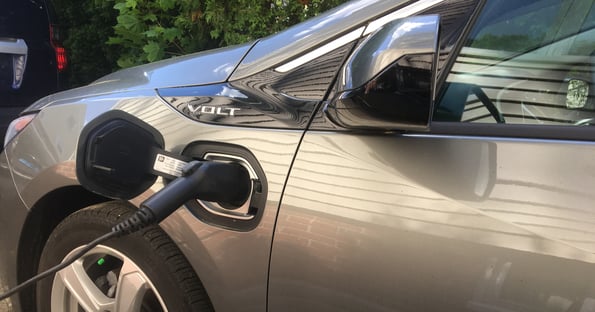
Furthermore, utility companies like National Grid offer charging programs to reward EV drivers for charging at night, when the system has the most excess generating capacity. Others, like Eversource, have programs to manage demand more directly.
If you’re still skeptical of the feasibility of 100% electric vehicles, there are plenty of reports out there that model the different pathways that New England can take to phase out fossil fuels by 2050. Both the 80x50 New England report from the Brattle Group and 2050 Massachusetts Decarbonization Roadmap study forecast the increased electricity demand from vehicle electrification. Utility planners, regulators, and legislators are taking note.
How are states supporting electrification in rural areas?
Rural areas are more car-dependent than urban areas, driving 38% more miles on average. A skeptic of electric vehicles might assume that they do not have the range to keep up if you live in the Berkshires. The truth is, today’s electric vehicles typically get about 250 miles per charge, which is more than enough for the daily rural average driving distance of 55 miles. In fact, rural residents have the most to gain from vehicle electrification:
- Since they drive more miles (and electric cars cost less per mile than gas-powered cars), the average rural driver could save $1,900 - $2,800 a year in fuel costs by switching to electric.
- A greater proportion of rural residents live in single-family homes, which makes charging easier than in condos and apartments in big cities.
Rural drivers tend to drive larger vehicles with features like all-wheel drive. Electric pick-up trucks and SUVs are coming to market to meet these needs. When these vehicles are widely available, we could see a big shift in the rural car-buying market.
This report by the Union of Concerned Scientists on clean transportation strategies for rural communities in northeast and mid-Atlantic states dives more into this topic.
How are states supporting low-income populations to adopt EVs?
Low-income Americans and communities of color are more likely to live in areas with terrible air quality and suffer from respiratory conditions like asthma. Electrifying vehicles will remove tailpipes from overburdened communities and address years of health inequity, on top of the climate benefits EVs offer.
Although electric vehicles have a lower lifetime cost of ownership than comparable gas-powered cars, their upfront cost may still present a challenge to low-income drivers. In just a few years, there will be more electric vehicles available to buy secondhand, which can make sure all people see the benefits. California, which is ahead of the rest of the country in EV adoption, is setting a good example for how EVs can help working people with their CleanCars4All program; establishing point-of-sale rebates and used rebates will be a good first step in Massachusetts to make electric vehicles accessible to low-income drivers.
However, we don’t have to wait years to equitably distribute the benefits of electrification. Many low-income Americans cannot afford any car and rely on the bus as their primary mode of transport. Diesel engines on buses and trucks are the worst culprits of poor air quality, so electrification of public transit fleets can clean up the air in a way that tangibly improves the quality of life for those that use them.
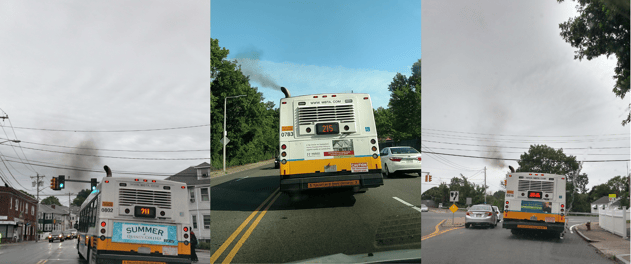 To accelerate the electrification of commercial vehicles that pollute air the most, Massachusetts recently expanded the state rebate for electric vehicles to cover commercial fleets and medium and heavy duty vehicles, which can mean anything from an urban delivery truck to an interstate long-haul truck. The interim 2030 Massachusetts Clean Energy & Climate Plan anticipates electrifying medium and heavy duty trucks will account for a third of overall emissions reductions in the next decade.
To accelerate the electrification of commercial vehicles that pollute air the most, Massachusetts recently expanded the state rebate for electric vehicles to cover commercial fleets and medium and heavy duty vehicles, which can mean anything from an urban delivery truck to an interstate long-haul truck. The interim 2030 Massachusetts Clean Energy & Climate Plan anticipates electrifying medium and heavy duty trucks will account for a third of overall emissions reductions in the next decade.
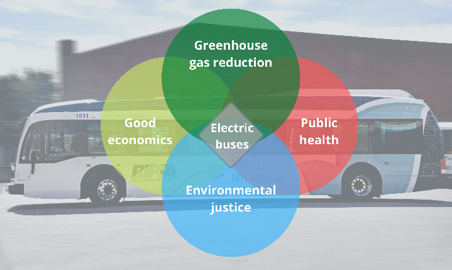
What is being done to transition mechanics serving ICE cars to electric cars?
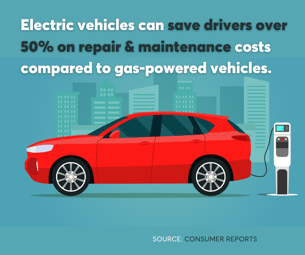
Electric vehicles spend less time in regular maintenance and repair. That will be good for drivers burdened by clunky transmissions and faulty spark plugs, but it may sound like trouble for the future of the car mechanic. However, we think there will be a place for mechanics for quite some time:
- If the last new combustion engine car is sold in 2034, that vehicle will be on the road until at least 2046. Mechanics’ services will not become obsolete overnight, even with a speedy phaseout of gas-powered cars.
- As cars become more technologically advanced, other issues are likely to pop up. Mechanics will learn new skills and develop new expertise, much like they did when the catalytic converter was introduced into vehicles in the 1980s. Instead of popping the hood when your car has an issue, the neighborhood mechanic of the future may plug into your car’s computer instead.
In the transition to a clean energy economy, there are ample opportunities to create jobs. For example, electric vehicle charging infrastructure will require billions of dollars of investment, which is good news for electricians. Overall, New England will generate many more jobs than it loses by concentrating investment in-state, as reported by the Economic and Health Impacts report in the technical appendix of Massachusetts 2050 Roadmap.
How can we simultaneously support EV adoption while supporting policies that reduce vehicle-miles-travelled overall?
There is a false dichotomy, particularly in dense urban areas, between electrifying vehicles and investing in public transit. We need both for a robust, diversified, and carbon-free transportation system.
In Massachusetts, you can make this clear by commenting on the interim 2030 Clean Energy & Climate Plan. In our view, the plan establishes a good framework for electric vehicles but does not give enough credit to the benefits of public transportation and reducing vehicle miles travelled – and therefore doesn’t focus on these important tools enough. Here’s how you can help:
- Read our blog – “What Mass. Gets right (and wrong) about transportation in the Clean Energy & Climate Plan.” (You can also read the comments we submitted to the Commonwealth here.)
- Click here to go to the Public Feedback form on the mass.gov website.
- Enter your name, email, and town/organization. Indicate that you’d like to comment on the “Transportation Sector” strategies.
- For each strategy (T1-T6), be sure to emphasize the following points:
-
-
-
- The plan is ambitious in its electrification goals, and that's a good thing. The state should strive to reach one million EVs on the road by 2030 while making a larger commitment to reduce vehicle-miles-traveled.
- Expanding and electrifying transit should be prioritized more than the plan suggests, especially to ensure equity in the transition to clean transportation.
- Regulations should be written and enacted quickly, and action should be taken to avoid backloading emissions reduction until the latter half of the decade by prioritizing actions for the next five years.
As we said in the webinar, EV technology and the market have both advanced greatly in recent years, but policy is lagging. We’re hoping that the webinar showed a path forward for every state because phasing out gasoline and diesel is possible and necessary, and the benefits are enormous. Please subscribe to this blog if you are interested in following progress on this front and others involving green energy.
Meanwhile, the transition to a clean energy future can be accelerated by your decision to purchase or lease an electric vehicle. You can learn more at greenenergyconsumers.org/drivegreen
.png?width=600&name=Phasing%20Out%20Gasoline%20Images%20w%20Icon%20(Email%20Header).png) April 6, 2022 update: In the year since we wrote this blog, the idea to phaseout the sale of new gas-powered cars has spread even faster than we would have thought. Learn about our campaign to set a goal for 100% of car sales to be electric by 2030 in Massachusetts and Rhode Island at greenenergyconsumers.org/drivegreen/takeaction/phasingoutgasoline
April 6, 2022 update: In the year since we wrote this blog, the idea to phaseout the sale of new gas-powered cars has spread even faster than we would have thought. Learn about our campaign to set a goal for 100% of car sales to be electric by 2030 in Massachusetts and Rhode Island at greenenergyconsumers.org/drivegreen/takeaction/phasingoutgasoline







Comments